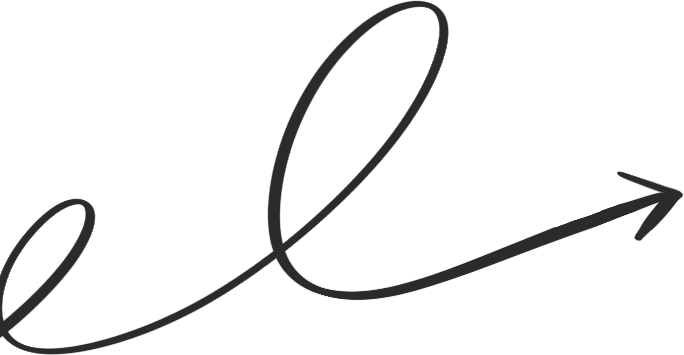How to Listen to Your Hunger Cues
Learning how to listen to your hunger cues is is a key component of becoming a more mindful and intuitive eater. When you eat when you’re hungry (and not over-hungry) your blood sugar doesn’t swing from high to low and you’re able to make better nutritionally-sound food choices. Using the hunger fullness scale is a great tool to help you tune inward and listen to what your body is telling you. Here’s how…
When I’m working one-on-one with clients, one of the first questions I ask is “Do you ever eat past the point of feeling full?”
The answer is almost always yes.
And guess what, so do I sometimes…I’m human! But the reason I ask this question is because it opens up the conversation to discuss hunger cues.
In the dieting world that we live in, we are bombarded with messages about portion sizes, carbs, proteins and fats, and eating as many veggies as possible. And yes, I do think this is all very important. And yes, I know I contribute to this noise.
BUT if you’re skipping meals or overeating at many meals, it doesn’t matter if you’re stuffing yourself to the brim with veggies. It doesn’t foster a healthy relationship with food, which should be the foundation for healthy eating habits.
This is why learning how to listen to your hunger cues is essential.
But what is HUNGER?
Hunger in America is a huge issue (and an entirely separate blog post). But to give you some perspective, 17.5 million households in America were food insecure in 2013, meaning they did not know where their next meal was coming from. Chances are, if you’re reading this, you have access to food, so hunger has a different meaning for you.
According to the super-reliable Wikipedia, hunger is “a feeling of discomfort or weakness caused by lack of food, coupled with the desire to eat.”
When you’re hungry your body will exhibit physical signs, including:
- Growling stomach
- Feeling of emptiness
- Headache
- Feeling lightheaded
- Irritability
- Lacking energy
- Feeling shaky
- Feeling weak
- Readiness to eat
Everyone’s physical signs of hunger can be slightly different at different points of hunger (i.e. ready to eat versus over-hungry).
Why do you get hungry?
Answering “why do you get hungry?” can be very complicated, but I’m going to keep this as simple as possible.
Your body requires outside energy to function, which leads to hunger. Your body produces several hunger hormones (like ghrelin) that signals to your brain and body that it’s time to eat.
What does it mean to be full and satisfied?
On the flip side of hunger we have fullness. Fullness is “the state of being filled to capacity,” or your stomach being full of food. Quite literally you fill your stomach and give your body energy.
Taking fullness a step further, satiety is “the quality or state of being fed or gratified to or beyond capacity.” The key word here is GRATIFIED.
When eating, we don’t just eat to be physiologically full, we need to eat to be mentally satisfied and gratified. This helps turn off our hunger hormones.
Balancing your hunger, fullness, and satiety — when you have adequate access to food — is essential to drop the diet mentality and to develop a healthy relationship with food.
Hunger, fullness, and satiety are key terms used in the intuitive eating community. Why? Because we all have different needs and a different quantity of food fills and satisfies our hunger — physically and mentally (read more about two types of hunger here).
If you pay attention to what YOUR body is telling you it needs, then you’ll learn to eat exactly what your body (no one else’s!) needs over time.
[Tweet “A different quantity of food fills + satisfies our hunger, so get in touch with your hunger/satiety scale!”]
How do you listen to your hunger cues?
Meet the Hunger and Fullness Scale
Every single one of my clients receives a copy of the hunger and fullness scale at our very first educational session.
Why? It’s important to get in touch with your inner cues to guide your food choices. It’s OK to be slightly hungry and comfortably full. Hunger is not a badge of honor, like most diets make you feel.
Instead, you can use your inner wisdom to guide your food choices, without calorie counting or macro tracking.
I cannot tell you how many clients find a safe, comfortable, and healthier relationship with food once they start eating by this hunger and fullness scale… even if they don’t make ANY other change to their eating patterns!
How to Use the Hunger and Fullness Scale
Tuning into your pre-meal hunger is a great way to begin to listen to your hunger cues.
Before you eat, ask yourself “On a scale of 1-10, how hungry am I?”
I typically suggest eating when your hunger reaches a 3. At first, you may feel silly and not know how to discern between a 3 and a 4, but overtime you’ll pick up on YOUR physical signs of hunger that signal it’s time to eat.
What happens when you’re over-hungry?
If you wait to eat until you’re over-hungry, it’s likely that your blood sugar has dropped too low, you’ll have increased sugar cravings, and it’s easier to over-eat. Even more, it’s much harder to choose a nutrient-rich and well-balanced meal when you’re ravenous and hangry.
Allowing yourself to eat the foods you love within your hunger and fullness cues helps you enjoy your life, maintain a healthy weight, and never be HANGRY because you’re deprived of your favorite foods!
Deprivation of any kind (purposeful or circumstantial) will lead to you being over-hungry. When you’re over-hungry and finally can eat again, it’s much more likely that you will over-eat, consuming food way past your comfortable point of fullness.
For many chronic dieters (my former self included), this can lead to feelings of guilt from over-eating. This can also re-start the binge/eat cycle you see below.
This is why under-eating and getting over-hungry is not the answer to weight loss. You do not need to restrict to lose weight.
How to Use Your Hunger and Fullness Cues to Figure Out How Much to Eat
Another common mindset I see in clients who have dieted on and off for most of their adult life is that they eat until they are stuffed because they… will be out the rest of the day, have a busy day at work, or aren’t sure when their next meal will be… etc, etc!
Instead, accept that you can always eat more if you’re hungry later.
Shifting this mindset leads to one of the BIGGEST a-ha moments my clients and Nutrition Training Program students have. It’s A-OK to eat when you’re hungry and stop before you’re stuffed because you know that you can always eat something else — even if it’s just 30 minutes after a meal that you left comfortably full. This is why prior preparation is key and always having a grab and go snack that you love on hand is essential!
I don’t provide my clients with a cookie cutter meal plan, but instead, want to help my clients see that when they listen to their bodies, they’re much more likely to see their lives nutritionally, be happier, less hangry and will give their bodies the nutrients they need!
If you want support tuning into your inner body wisdom to figure out how much to eat, book a free initial consultation!
XO
-
Pingback: Intuitive Eating For Beginners: Start Here - Chelsey Amer


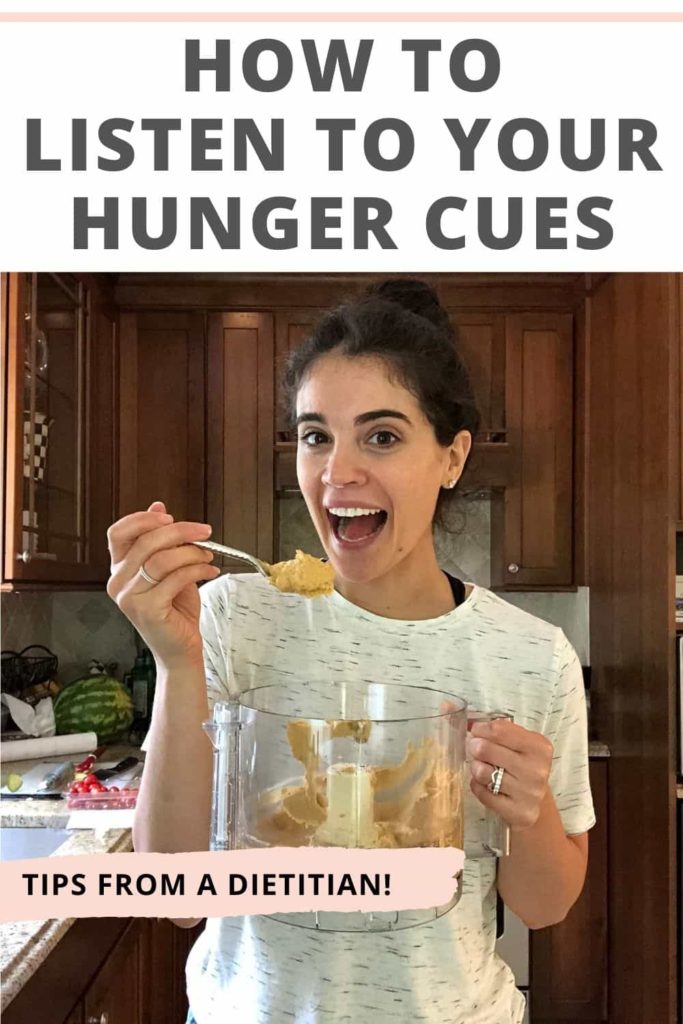
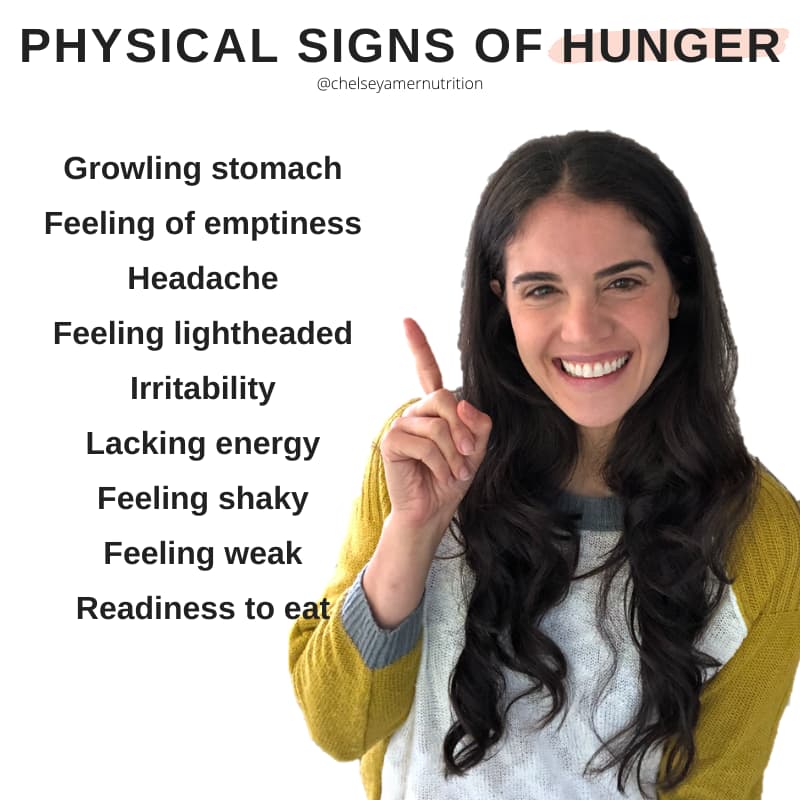
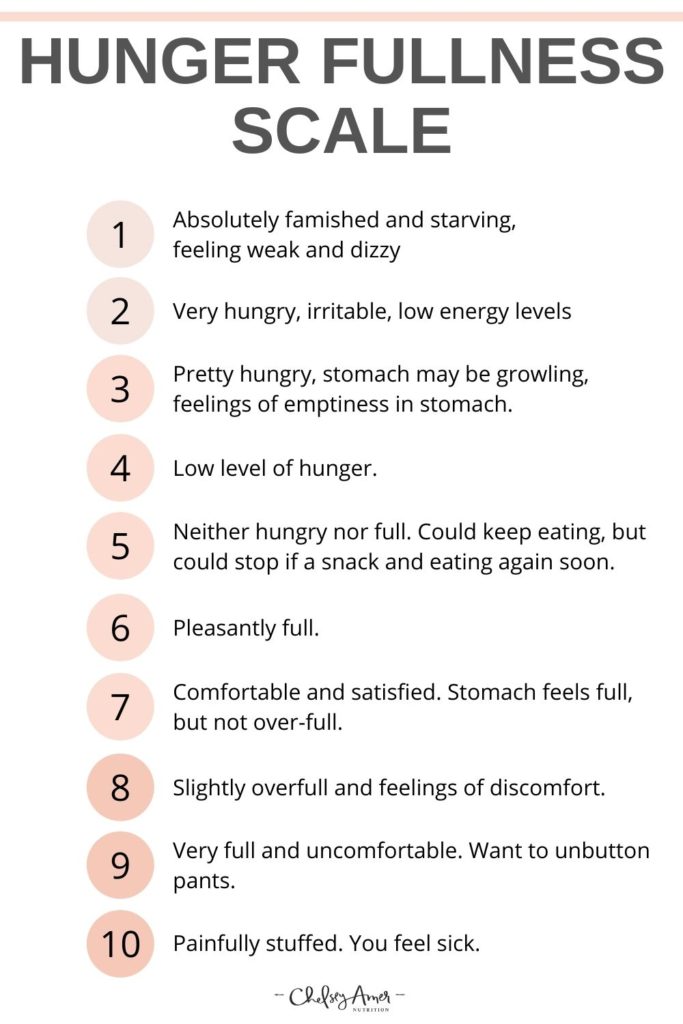
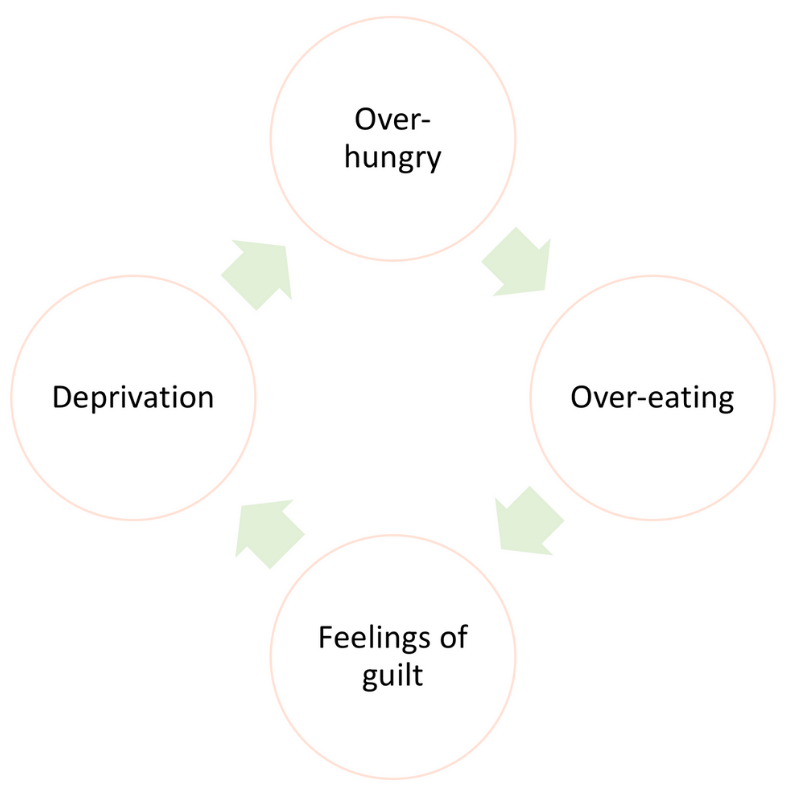
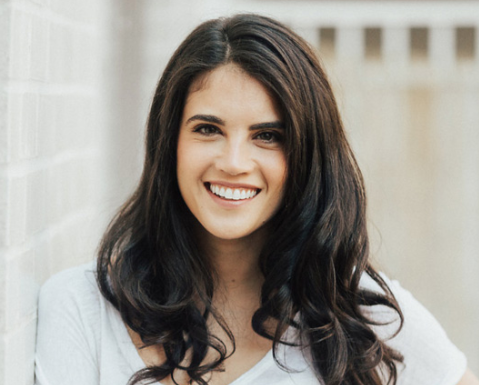 Hi there!
Thanks for stopping by! I'm Chelsey, an online Registered Dietitian, recipe developer, budding photographer, and coffee addict! My mission is to help you feel good through food by answering the question "What should I eat?" Let's make nutrition approachable!
I hope you enjoy my personal collection of simple, healthy, food allergy friendly and nutritiously delicious recipes, plus tips and tons of tricks that will help YOU live a nutritionally-balanced life! I look forward to getting to know you better...
Hi there!
Thanks for stopping by! I'm Chelsey, an online Registered Dietitian, recipe developer, budding photographer, and coffee addict! My mission is to help you feel good through food by answering the question "What should I eat?" Let's make nutrition approachable!
I hope you enjoy my personal collection of simple, healthy, food allergy friendly and nutritiously delicious recipes, plus tips and tons of tricks that will help YOU live a nutritionally-balanced life! I look forward to getting to know you better...
